This article was published in Scientific American’s former blog network and reflects the views of the author, not necessarily those of Scientific American
Without Hedy Lamarr, we wouldn't have WiFi or Bluetooth technology, yet most people just know her as a famous actress. Without Sally Ride, our modern satellite communication architecture and NASA's focus would look very different, yet most people just know her as the first female American astronaut. Without the women’s suffrage movement in the 1850s, the second industrial revolution would have looked very different. It is not a coincidence that as women have rapidly joined the workplace, so too has our technological advancement exponentially increased.
Nevertheless, women’s contributions to scientific and technical progress are notoriously absent from historical narratives, with rare exceptions like Hidden Figures, which demonstrate though incredible box office success that there is a huge untapped appetite for diverse STEM stories.
How can we use storytelling to foster greater diversity and inclusion in the sciences?
On supporting science journalism
If you're enjoying this article, consider supporting our award-winning journalism by subscribing. By purchasing a subscription you are helping to ensure the future of impactful stories about the discoveries and ideas shaping our world today.
STEP 1: Admit we have a problem
Studies show gender bias in science is real and it matters. Stanford conducted research and found hiring bias in STEM to be real. In the study, scientists were given a pile of resumes and asked to rate how qualified they believed candidates to be. What they didn’t know is that there were duplicate copies of certain resumes with one slight alteration: some would say John at the top, others Jennifer, or some variation therein.
Overwhelmingly, the scientists deemed the male applicants to be more qualified even when the resumes of the female counterparts were exactly the same. This may explain why men are published more than women, receive greater tenure, advance up the scientific community ladder in greater numbers than women, and why as a result women’s contributions get left out of our scientific narrative.
As a result of gender bias in STEM, there is a gender bias in our STEM storytelling. Men’s scientific stories and contributions receive greater coverage in media, and because social media is based on search engine optimization (SEO), male scientists with content published in major media outlets receive higher SEO rankings. This means when folks research a particular science topic online, their top results are more likely to be men.
This becomes a feedback bubble that plays out in very real media (and social media) tropes. Infographic maker Adioma, highlighted famous entrepreneurs and their journeys to success based on Walter Isaacson’s book The Innovators: How a Group of Hackers, Geniuses, and Geeks Created the Digital Revolution. They covered Bill Gates, Elon Musk, Mark Zuckerberg, Jeff Bezos and Albert Einstein! Notice a trend? They’re pale, male and overly hailed … and this sixth sense propensity for prioritizing the stories of white male STEM folks, plays out in very scary ways for gender bias. It basically means women and people of color become invisible, unless they play along and champion themselves as “Hidden Figures” in their respective fields.
STEP 2: Burst the feedback bubble
I recently interviewed Jackie Faherty, a PhD Astronomer with the American Museum of Natural History. She calculates the best places to witness Manhattenhenge, the days when the rising or setting sun aligns with the east-west grid of Manhattan. Of course, Neil DeGrasse Tyson is the more famous male scientist we associate with publicizing Manhattenhenge, thanks in part to our STEM storytelling biases.
Jackie told that she intended to be a pilot, but then she saw the movie Contact with Jodie Foster and knew that she wanted to study the cosmos. Contact was written by Carl Sagan and his wife, Ann Druyan, in part to give women and young girls role models in the sciences and to push back on the kind of sexism Ann encountered while working in the STEM field. If Jackie is any indication, science storytelling clearly helps foster greater diversity and inclusion in the sciences, particularly if those stories feature female protagonists.
So the best way to burst the feedback bubble, which perpetuates the idea that men are better at STEM than women, is to share stories of the achievements of women in science. This means we need to fund more biopics of women in the sciences. We need to have science shows feature more women hosts and women in STEM. We need social media content that highlights women’s achievement in STEM so Google starts to rank women scientists higher in terms of SEO.
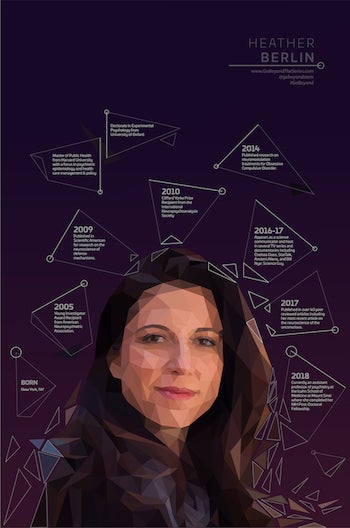
Heather Berlin, from the #GoBeyond series of infographics on women in science. Credit: #GoBeyond
Some smart folks are starting to take notice—the World Science Festival this year has committed to featuring women in science. The science Web site Inverse has a digital series “Your Brain On Blank” featuring female neuroscientist Shannon Odell explaining how different substances, like caffeine, alcohol and even puppies, affect our brains. And this essay is appearing in Scientific American’s Voices section, which features pieces about women and other groups that are largely left out of the STEM conversation.
.jpg?w=350)
Intersectionality is particularly important. It’s not enough to share stories of just white women scientists. We need to highlight women from all backgrounds and nationalities, who participate in STEM. Last year I launched #GoBeyond to share stories of women who are doing groundbreaking scientific research. This month, we launched a series of infographics, as a response to the Adioma biographies, highlighting six women and their contributions to scientific and technological advancement. These infographics feature Iranian-Americans Pardis Sabeti and Maryam Mirzakhani, African-Americans Jedidah Isler and Shirley Ann Jackson, British space scientist Suzie Imber, and New York neuroscientist Heather Berlin.
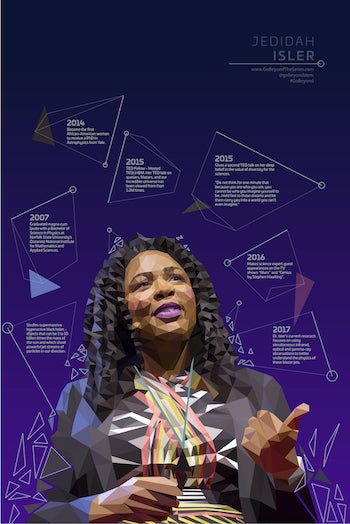
It’s time to normalize stories of women’s scientific achievements so young girls have role models, and so young boys come to realize that women in STEM aren’t unicorns or less qualified than their male counterparts. So when you see science stories or lists of top science stars that highlight only four women out 50 scientists, call out these publications and ask them to share more stories of women’s achievements.
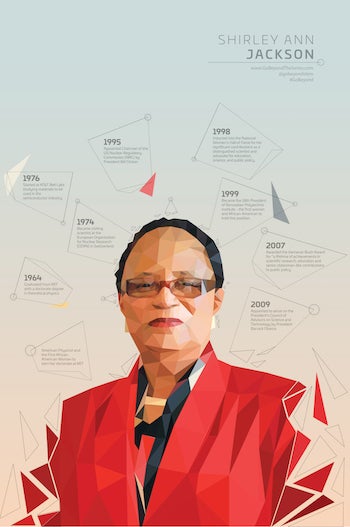
When President Obama took office, two thirds of his top staffers were men. So female staffers adopted a meeting strategy they dubbed “amplification”: When a woman made a key point, other women would repeat it, giving credit to its author. This forced the men in the room to recognize the contribution, and denied them the chance to claim the idea as their own. Similarly, women in the scientific and technical communities need to cite other women more in their work, and give credit to those women.
STEP 3: Prepare girls to enter groundbreaking science fields
According to a U.S. Department of Commerce 2017 study, women comprise only 24 percent of STEM fields. This gap becomes more pronounced in groundbreaking fields like cybersecurity, quantum computing, clean energy, material science and synthetic biology. So it’s particularly important that science and sci-fi storytellers tackling topics in these disciplines feature female protagonists.
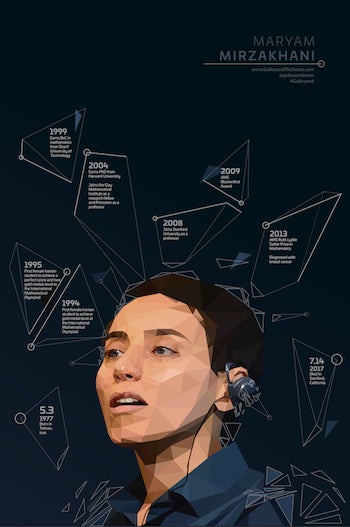
It is wonderful that we have organizations like Kode with Klossy and Girls Who Code, but women already have long standing histories in these fields—Ada Lovelace, Grace Hopper, Katherine Johnson, Mary Jackson, Dorothy Vaughan and NASA’s human computers. If we’re only preparing young girls to tackle established STEM careers, rather than getting them exciting for the groundbreaking STEM fields of tomorrow, then we’re training them for the jobs of the past instead of the jobs of the future. And until a woman comes along to invent time travel, we’ll have a greater time achieving gender parity in these fields if we prepare young girls for the STEM jobs of the future. So let’s teach girls biological programming/CRISPR technology, algorithmic genomic surveillance or blockchain applications, or let’s do a robotics bootcamp, where girls get to build real world applications for Jenny 5.
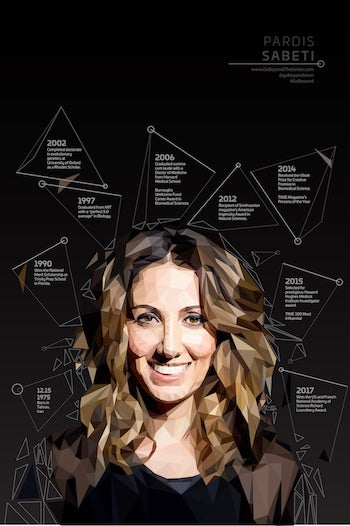
In light of recent events—the hacking and election rigging on Facebook, the increase in global natural disasters—now more than ever, we need champions. We need platforms. And we need storytellers who can win over the hearts and minds of the next generation of STEM professionals. It’s going to take filters and perspectives from all walks of life to drive the innovations of the future. It's time to identify those diverse champions, share their stories, and rewrite the narrative of scientific success.
Note: the infographics shown here were designed with the help of Jennifer Tate, an industrial designer and guest lecturer at Pratt Institute, who designs products and experiences by women for women.